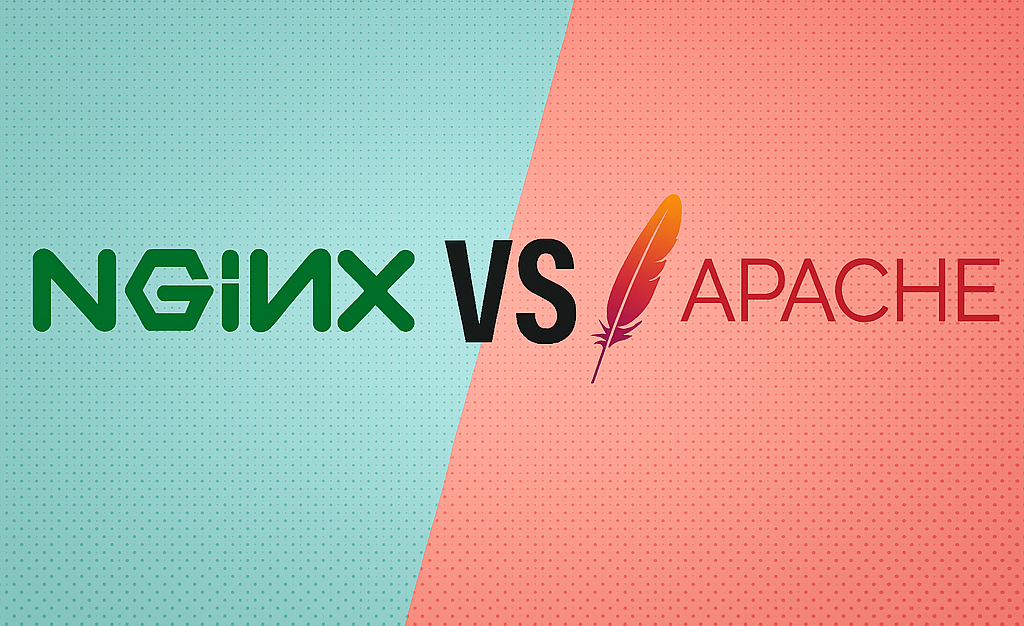When it comes to hosting web applications, two web servers dominate the conversation: Nginx and Apache. Both are powerful, open-source, and widely used but they approach performance and architecture very differently.
So which one is better? The answer depends on your use case, traffic, and tech stack.
In this guide, we’ll break down the key differences, use cases, and when to choose one over the other.
Quick Introduction
Apache (HTTPD)
Developed by the Apache Software Foundation
Released in 1995
Known for its .htaccess support and flexible modular architecture
Handles each connection with a separate thread or process
Nginx (pronounced “Engine-X”)
Created by Igor Sysoev in 2004
Built to solve the C10K problem (handling 10,000+ concurrent connections)
Uses an event-driven, non-blocking architecture
Famous for speed and low resource usage
Architecture: Process vs Event-Driven
| Feature | Apache | Nginx |
|---|---|---|
| Request Handling | Multi-threaded / process-based | Event-driven / asynchronous |
| Performance | Slower under heavy traffic | Excellent at handling high concurrency |
| Resource Usage | High memory with many connections | Low memory footprint |
| Scalability | Limited by threads | Built for scale |
Verdict: Nginx wins for high-performance, high-traffic websites
Configuration & Flexibility
| Feature | Apache | Nginx |
|---|---|---|
| Configuration Files | httpd.conf, .htaccess | nginx.conf only |
| .htaccess Support | Yes — supports per-directory overrides | ❌ Not supported |
| Ease of Use | Flexible but complex for beginners | Clean and simple, but strict |
Verdict: Apache wins for per-directory flexibility (like shared hosting)
Static vs Dynamic Content Handling
| Task | Apache | Nginx |
|---|---|---|
| Serving Static Files | Good | Excellent (super fast!) |
| Handling Dynamic Content | Embedded (PHP via mod_php) | Reverse proxy to app server (e.g., PHP-FPM) |
Verdict:
Use Nginx for fast static sites and modern web stacks
Use Apache for simple LAMP stack sites (PHP, MySQL)
Reverse Proxy & Load Balancing
Nginx is widely used as a reverse proxy, API gateway, or load balancer.
| Feature | Apache | Nginx (preferred) |
|---|---|---|
| Reverse Proxy | Supported (via mod_proxy) | Built-in, faster, and more efficient |
| Load Balancing | Basic | Advanced with health checks & retries |
Verdict: Nginx dominates here — it’s the go-to choice for modern architectures like microservices or containerized apps (e.g., Docker, Kubernetes)
Security & Community Support
| Aspect | Apache | Nginx |
|---|---|---|
| Security | Mature with strong updates | Also secure and maintained actively |
| Community | Huge — decades of plugins | Fast-growing, strong ecosystem |
| Enterprise | Apache HTTPD + Apache2 tools | Nginx Open Source / Nginx Plus |
Verdict: Both are secure and well-supported. Nginx is newer but backed by F5 and widely used by companies like Netflix, Airbnb, Dropbox
Use Cases
| Use Case | Recommended Web Server |
|---|---|
| High-traffic APIs, React/Vue apps | Nginx |
| CMS like WordPress on shared hosting | Apache |
| Serving static files (JS, CSS, media) | Nginx |
| Custom PHP scripts via mod_php | Apache |
| Reverse proxy in front of Node/Flask | Nginx |
Can You Use Both?
Yes! Many architectures use Nginx as a reverse proxy in front of Apache.
Internet → Nginx (proxy) → Apache (app server) → PHP/MySQL
This gives you:
Speed and caching from Nginx
Flexibility of Apache for complex backends
Final Verdict
| You Should Choose | If You Need… |
|---|---|
| Nginx | Fast static content, scalable performance, low resource usage, API proxying |
| Apache | Deep .htaccess support, shared hosting, legacy LAMP stack simplicity |
Related reads:
External resources:
